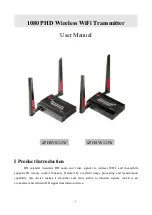
DP 6000 DIGITAL PAGING SYSTEM INSTALLATION INSTRUCTION 94
May 1999. Page 4
2.3
Low Battery warning
A visible and audible low battery warning facility (see section Bleep Pattern and LED Indication Chapter 5) built-in to
the mobile indicates when the battery voltage drops below a certain level. This level for rechargeable batteries is
2.2 V*, for non-rechargeable batteries this level is 1.35 V*. The low battery state is transmitted to the central control
with each check-in call. When new batteries are placed in the mobile, the mobile will switch-ON and emit a confirma-
tion bleep.
*The values given are measured under loaded conditions.
2.4
Battery charging
The mobile has three contacts (fig.1H) used for charging and programming the mobile when placed in its charging/
storage rack.
3.
O
PERATING
C
ONTROLS
AND
ALARM
PROCEDURES
3.1
ON/OFF and Rack procedures
The Mobile has no ON/OFF switch. When the mobile is placed in a storage/charging rack in its normal operating
mode (i.e the battery/program switch is placed in position 2 (middle position) or 3 (lower position) (Fig.1L) it will emit
a confirmation bleep and generate a first status-call sequence with N-repetitions (opcode setting 1Q). After that it
will enter the normal status calls transmit mode. If the mobile receives (at any time) a reply-call from the central desk
via the rack interface, it will cancel its remaining repetitions and enter into the a state, were no more calls will be
transmitted until the mobile is removed from its storage/charging rack. The mobile however will still monitor the rack
interface. Should the central control desk send a request call for this mobile then the mobile will again begin its in-
rack check-in calls procedure.
All the sensors including the location receiver (if placed) are functionaly disabled once the mobile is placed in its
storage/charging rack. The last two received locations will remain stored. When removed from its storage/charging
rack, the mobile will begin a status call sequence with the in_ rack bit set to 0 and the ON bit set to 1.
NOTE:
When the mobile is placed in a single storage rack LBB 6152/00, the mobile acts as if it was placed in a
standard storage rack (provide absence indication etc..).
If the mobile is placed in a storage/charging rack in an alarm state, it will reset the alarm state and transmit a status-
call with the reset alarm status. If after 5 seconds the mobile is still in the storage/charging rack it will restart the call
sequence and transmit a call (N-times repeated) with the reset alarm status and the rack bit set. If however the
mobile is removed from the storage/charging rack within 5 seconds of placing it in its rack, it will complete its reset-
alarm calls repetition without changes, as though it hadn’t been placed in a storage/charging rack.
When the mobile is placed in a storage/charging rack in a pre-alarm state, this state will be reset. In this case if the
mobile is still in the rack after 5 seconds it will begin a status-call sequence with the rack bit set. If however it is taken
out of its rack within 5 seconds it will only reset the pre-alarm state without starting an in-rack status call sequence.
When the battery/program switch is in the ‘Program’ position and the mobile is powered by batteries, it will emit a
confirmation bleep and enter into the ‘Diagnostic_Standby’ mode. In this mode no calls will be transmitted and the
mobile will only react when the Manual alarm button is pressed, or when placed in a storage/charging rack. For a
description of the diagnostic mode refer to Chapter 6.
When the battery/program switch is in the ‘Program’ position and the mobile is in a storage/charging rack (with or
without batteries) it will emit a confirmation bleep and enter into the ‘Program’ mode. In this mode when the manual
alarm button is pressed for more than 2 seconds the mobile will reset all its settings to default and generate a ‘Pro-
gram’ bleep on completion and return back to the ‘Program’ mode. For a description of the programming refer to
Chapter 4.



































